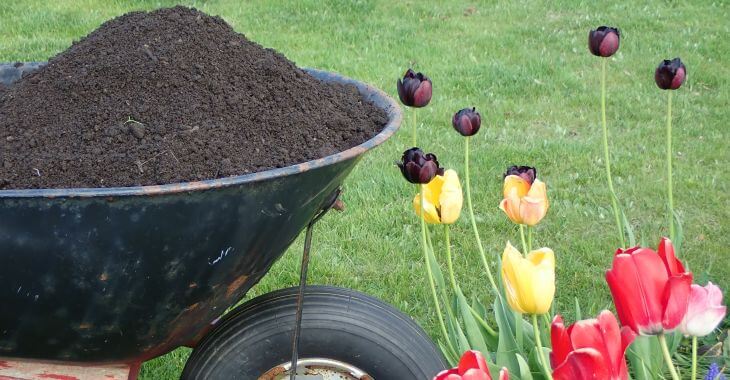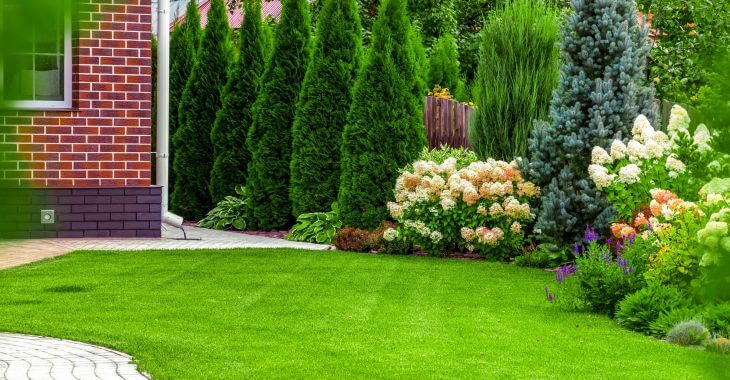What Is the Best Top Soil for Lawn Dressing?

When your lawn starts to look uneven, patchy, or unhealthy, it might be time for top dressing. This process involves applying a thin layer of soil over your grass to improve soil quality, promote growth, and level the surface. But what is the best top soil for lawn success?
Why Lawn Dressing Matters
Top dressing plays a crucial role in turf health. It helps reduce compaction, improves drainage, and encourages deeper root growth. Over time, this creates a lawn that’s not only lush and green but also more resilient to foot traffic, pests, and weather fluctuations.
What Top Soil to Use for Lawn?
Not all soil is created equal. The best soil for top dressing lawn areas is a blend of materials that mirrors the existing soil. This prevents layering issues and helps grass roots spread evenly. A typical mix includes sand, compost, and loam in balanced proportions.
Understanding Soil Components
Sand improves drainage and helps break up clay-heavy soil. Compost adds nutrients and organic matter to feed your lawn. Loam, a balanced mix of sand, silt, and clay, retains moisture without getting soggy. Together, they make a powerful combination for growth.
Best Soil for Top Dressing Lawn by Type
For clay soil, a sand-heavy mix helps loosen the structure. For sandy soil, use compost-rich topsoil to retain water. For loamy soil, a balanced blend of all three components maintains fertility and structure without overcomplicating maintenance needs.
Before applying any top soil for lawn care, test your existing soil. Adding topsoil that differs too much in texture can cause water to sit above or below root zones. Matching your lawn’s base soil ensures proper water flow and root development.
If you’re unsure what top soil to use for lawn improvement, get a professional soil test. It will tell you what nutrients are missing and what texture your lawn needs. This allows for customized lawn dressing that targets your yard’s specific weaknesses.
How Much Top Soil Is Enough?
The general recommendation is to apply ¼ to ½ inch of top soil for lawn top dressing. Spread it evenly and avoid smothering the grass. Thicker layers can block sunlight and air, potentially damaging your lawn rather than helping it.
For most lawns, top dressing once per year—typically in early fall or spring—is sufficient. However, high-traffic lawns or those with soil issues may benefit from more frequent applications. Regular top dressing builds healthier, thicker turf over time.
Use a shovel, wheelbarrow, or broadcast spreader to distribute topsoil. A leveling rake helps spread it evenly. Water lightly afterward to help the new layer settle and blend with the existing soil. Avoid compacting the soil too firmly.
Benefits Beyond Appearance
Top dressing doesn’t just make grass look better. It helps balance pH levels, introduces beneficial microbes, and fills low spots in your yard. These benefits make it one of the most effective treatments for long-term lawn health.
According to the USDA, compost-enriched soil can increase water retention by up to 30%. This makes compost a key ingredient in the best soil for top dressing lawn areas, especially during drought-prone seasons or when cutting back on irrigation.
Avoid Low-Quality Topsoil
Cheap or untested topsoil can contain weed seeds, pathogens, or poor drainage materials. Always buy topsoil from a reputable supplier. Look for screened, weed-free blends that have been tested for pH and organic content to avoid introducing new problems.
Aeration and Seeding Combo
Top dressing works best when combined with core aeration. Aerating before applying top soil for lawn allows nutrients to reach deeper into the root zone. It’s also a great time to overseed, especially if you’re trying to thicken thinning turf.
When to Top Dress a Lawn
Fall is ideal because it allows time for root systems to strengthen before winter. Spring also works well, giving grass time to grow and benefit from enriched soil. Avoid top dressing in peak summer heat or during periods of heavy rainfall.
After applying topsoil, most lawns bounce back within 2–3 weeks. Grass may look slightly dusty or uneven at first, but regular watering and mowing help integrate the new soil and encourage lush regrowth across the treated areas.
DIY vs. Professional Application
You can top dress a lawn on your own, but for large yards or complicated soil issues, hiring a professional ensures even application and proper soil matching. Many landscapers also offer aeration and overseeding as part of the same treatment.
Long-Term Lawn Care Strategy
Top dressing is not a one-time fix. Over time, regular applications improve soil structure, reduce thatch buildup, and help lawns resist drought and pests. When paired with proper mowing, watering, and fertilization, it’s a game-changer for your yard.

So, what is the best top soil for lawn dressing? It’s a mix that matches your soil profile, includes quality compost, and supports strong root development. Take time to test, blend, and apply it right—and your lawn will thank you.
Whether you’re a DIYer or prefer a pro to handle it, choosing the right topsoil makes all the difference. With the right materials and timing, top dressing can transform tired turf into a lush, green landscape that thrives season after season.